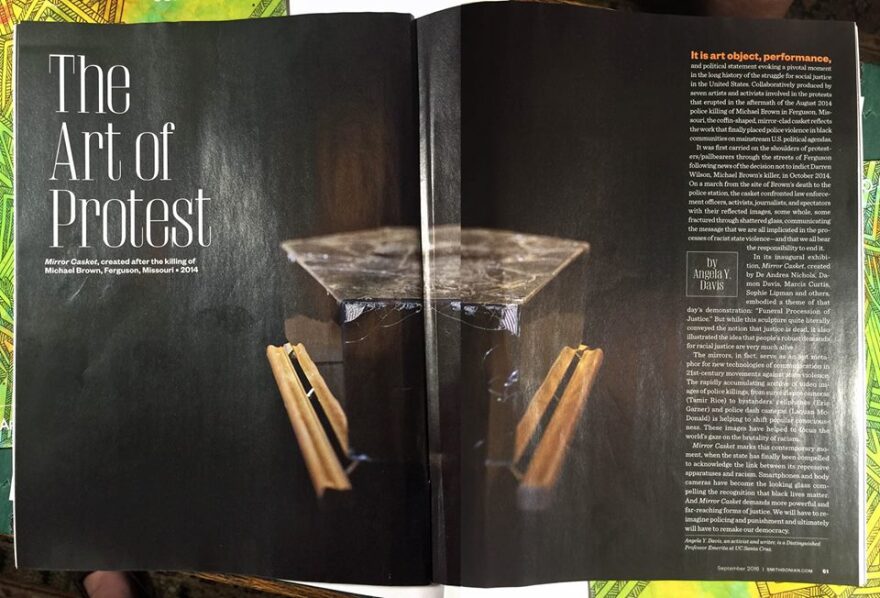The National Museum of African American History and Culture opened in Washington, D.C., to the public this past weekend. Unlike many of those in the crowd at the opening ceremony, St. Louis artists De Nichols, Marcis Curtis and Mallory Nezam made artwork that is in the museum’s collection.
The trio made the 13-hour trip by car from St. Louis to see The Mirror Casket’s new home. After touring the exhibits, the group left confident that the Smithsonian will carefully display the life-sized casket covered in shattered mirrors. The sculpture asks audiences to reflect on their role in the struggle for social justice.

“It’s always so good to see how this type of space is curated and treated differently than a lot of other spaces,” Nichols said. “I feel affirmed. I feel cared for, and that doesn’t often happen.
"When I think about the possibility, that the casket will be in one of these exhibitions soon, I feel a sense of trust that the narrative, the story, the struggle will be respected and that it will be shown in a way that takes into detail and consideration so much of what we’ve been through.”
The Mirror Casket was born out of a recurring nightmare that Nichols had after protesting in Ferguson in August 2014.
In it, dark looming figures dressed in black carried a casket covered in mirrors toward her. She reached out to a number of friends in St. Louis’ art community for help making the casket a reality.

Curtis, Nezam and four other artists answered the charge. They finished it weeks later, in time for protests across Ferguson — most notably after a grand jury decided not to indict then-police officer Darren Wilson, who shot and killed Michael Brown. Protesters carried the casket from the site where Brown died to the Ferguson police station.
The casket became part of the museum’s permanent collection after it was purchased by the Smithsonian in 2015. It is awaiting exhibition, where it will be paired with other Ferguson works.
Nichols envisions a performative element to the display. She pictures a dark room where audiences enter one by one, greeted by sounds from Ferguson protests:
“We have this one video clip of it in use on the first night and you can hear Derrick yelling through a megaphone at the police," Nichols said. "Like, that’s the type of experience that I want people to have with the casket.

Those moments, in tandem with the other artifacts from this movement, I think are going to be what makes [it] more than just this thing that young people are doing, but like something that we are all a part of.”
Follow Jenny on Twitter @jnnsmn



